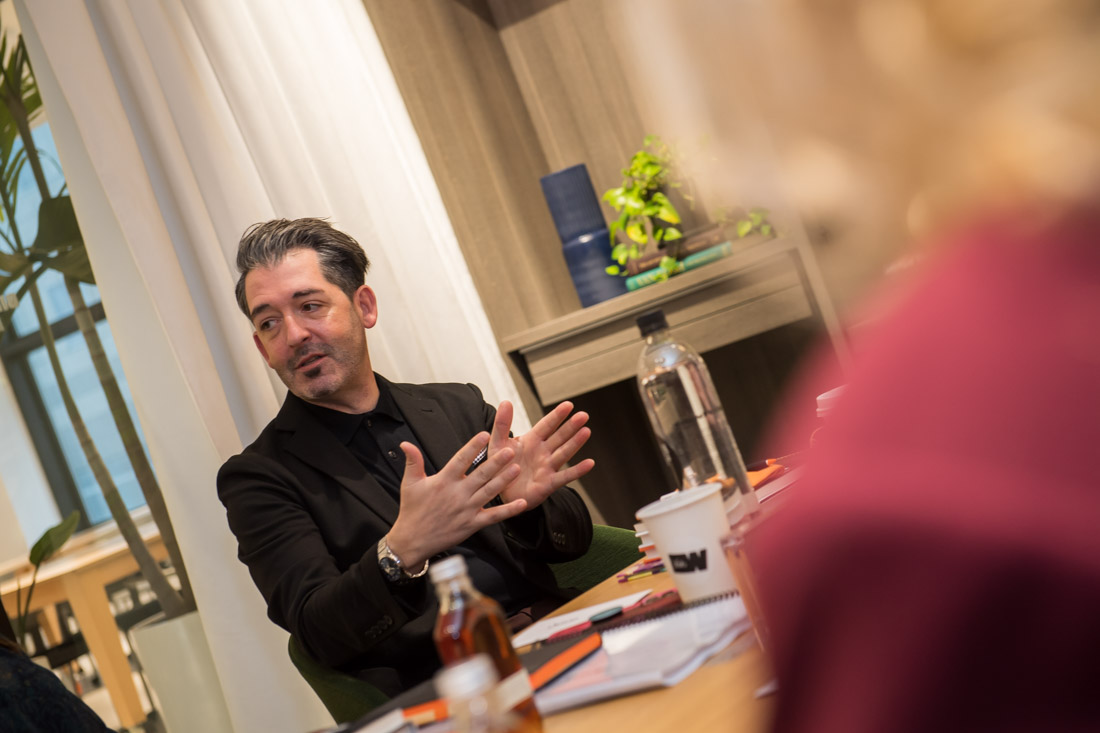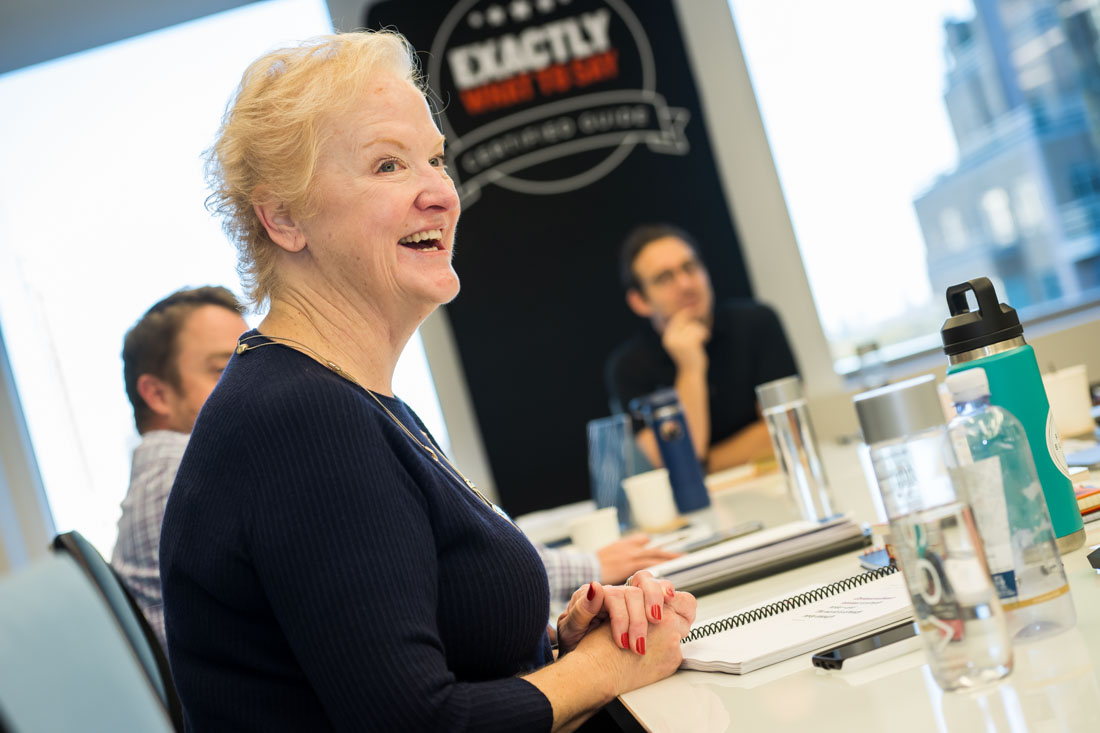A Simple Framework For Winning Trust
Trust comes from all walks of life. You trust the brands you know. You trust that your mechanic will fix your car. You trust that your new waterproof watch will withstand a shower of rain. But trust is a funny thing – sometimes it’s easy to gain and others you have to put the work in.
If it’s the trust of a prospective client that you want, did you know that there’s a simple and easy framework that you can follow?
This framework can be used in practically any scenario where you have a persuasive outcome in mind. If you want somebody to do something, they have to trust you first.
You can build this trust quickly and easily using the 6 Ps.
‘Show Me That You Know Me’ Button
If you’re looking to win trust through a video, you want to be able to create an introduction that promotes you as somebody worth listening to.
To do this, you first need to consider the fact that there’s a button inside the head of every decision-maker on the planet.
This button is the ‘show me that you know me’ button.
Your audience needs to believe that you ‘know’ them. You understand their pain and you have the solutions to fix everything.
If you fail to hit the ‘show me that you know me’ button early on, you’ll create friction and resistance from your audience. But if you hit the sweet spot and have success with finding it, you’ll build trust quickly.
And the quicker you can get your audience to trust you, the quicker they’ll grow to like you and that’s when you can talk business.
Target Your Audience
If you want to show the audience that you ‘know’ them, you first need to know who your audience is.
A mistake that a lot of people make is trying to appeal to a wide audience. They don’t want to alienate anybody, but in doing this, they risk alienating everybody.
Your script should be focused on being able to empathise with the key person that’s on the other side of it. Be crystal clear on who this person is and target your efforts to suit them.
In doing this, you’ll likely get some people watching your video or reading your article who don’t match your target market, but they may have a passing curiosity or burgeoning interest.
If you’re aiming right at your target, you’ll inadvertently hit some of the surrounding audience without even trying to.
Think of it like a game of darts. If you’re not aiming for the bullseye, you might end up hitting the wall or the floor. But if you focus your aim right in the middle for that jackpot position, even if you miss the bullseye you’re more likely to hit the board and gain a few points.
Slow Down Your Selling
Nobody likes to feel like they’re being sold something, but everybody likes to feel like they’re being understood and listened to.
So if you’re writing sales letters, web copy, video scripts or anything where your aim is to persuade, the best thing you can do is to slow it down.
Delay the ‘please buy from me’ part as much as you can and fill the rest with as much empathy as possible.
Remember this:
You’ve got great content. But content before context is noise. We live in a world where it’s already noisy enough.
Don’t give your audience more noise. Build context.
The 6 Ps
The 6 Ps is a framework that creates context, builds empathy, and ultimately wins the trust of those you want to sell to.
Perspective
A great way to start creating perspective in your intro is to begin with the words ‘you know how…’.
For example: ‘You know how many people…’ or ‘you know how most people…’.
Make this relevant to your business. If you’re a real estate agent you might say, ‘You know how many people find themselves needing to buy and sell their home, but they have no idea who to trust?”
Now you’ve built some perspective and your audience is relating to it. They’re thinking, ‘That’s me. I’m on your website because I’m wondering why you as opposed to the next guy”.
The next thing you do is call out the perspective. For example: “I know why you’re here. You want to buy or sell your home and you want to know who’s right to help you with the job”.
Problem
So you’re building the context and you can now amplify the perspective you’ve created by introducing a problem.
State the kind of problem that your target audience is facing.
Like: ‘The problem is, there are so many real estate agents out there, it’s difficult to know what to look for, who to pick and who might be the right person for you’.
You want to point out how complicated the problem is.
Pain
Then amplify the problem by attaching a bit of pain to it.
The pain demonstrates what the problem causes for your target. For example: ‘It’s complicated because… Which means that you might pick the easiest choice, the most convenient choice, or maybe even the cheapest choice. All of which are likely to be the wrong choice.’
The pain is the unwanted consequence you get if you don’t find the right solution to the problem.
Possibilities
Now we’re coming to the solutions. You’ve got your perspective, your problem, and your pain and now you need to map out some possibilities for your audience. Some choices and some options.
For example: ‘You could shop around and try to look for the perfect real estate agent. In my many years of doing this, I’m not sure that even exists. You could decide to go for the cheapest option or you could go with the most trusted, long-standing, professional team of real estate agents here in Dallas. A real estate agent that in the last 12 months, has helped over 350 families, not only find the perfect home but do it the easiest, most convenient and straightforward way to get the best possible outcome for them.’
Here, you’re providing the audience with you as the final option.
It works best to give 3 possibilities. With the 3rd being the one you want them to pick. It will feel to the audience like you’re giving equal weight to the 3 options but in reality, you’re giving 10% to the first two and 80% to the third option.
Pleasure
You need to finish that whole piece by describing the outcome that the audience will get if they choose you. Here’s the pleasure. The benefits of what you’re going to give them.
Conclude your pitch by painting a picture of the ideal outcome that the audience will end up with if they go with you. This is the ‘pleasure’ bit. Really highlight the benefits that you provide, while directly countering any pain points you have raised.
This needs to use the understanding that you gathered when you created your ‘target market’. What makes them feel satisfied? What outcome will really push them over the line towards you? Name these and you’ll have them eating out of your palm.
Plan
The plan is the action stage – the part where you give direct instruction. The ‘do this’. Tell them what you want them to do next, whether that’s ‘fill the form below’, ‘send a message’, or ‘give us a call’.
What you don’t need to do is ask. You don’t need to say ‘Please choose us!’ because you’ve already mapped out their route and now you’re being directive. You ARE their solution.
The 6 Ps In Short
1
Perspective
Empathise with your audience and target your specific market.
2
Problem
Understand the difficulties facing your audience – ‘It’s complicated’.
3
Pain
Amplify the problem with the possible pitfalls- “which means that”.
4
Possibilities
Give your audience 3 choices with the 3rd being you.
5
Pleasure
Outline the upshot of picking the 3rd choice and the benefits that go with it.
6
Plan
Tell your audience what they’re going to do to get what they want.
Use this simple framework to take your self-promotion to the next level and get unbelievable results.
And always understand that with great power comes great responsibility. Getting people to trust you is great, as long as you are trustworthy.
Use the ‘Exactly What To Say’ knowledge and advice wisely. It’s to help you and also to help others with your products and services that you know will benefit them and make a positive difference.









